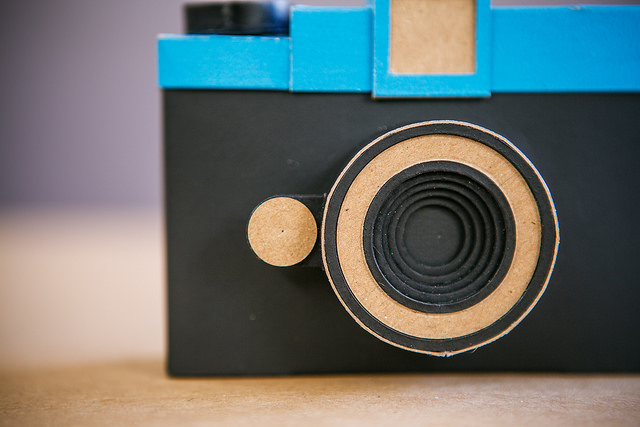How To Make A Pinhole Camera With Cardboard Seal it and paint it flat black. The box must be light proof. Take your ruler and draw an X in the center of the side of the box where you want to put the pinhole. Seal it and paint it flat black.

Slide the cardboard cutout into the shoebox covering the larger opening. Eastman Museum historic process specialist Nick Brandreth shows us how to make a pinhole came. By Anne Buckle and Aparna Kher.
IntroductionA pinhole camera is a simple camera without a lens but with a tiny aperture.
IntroductionA pinhole camera is a simple camera without a lens but with a tiny aperture. How To Make A Pinhole Camera With Cardboard Make two attachments one is for a pin-hole camera the other is for a lens camera as shown in Fig7. To make the hole I place it on a semi-soft surface like cardboard and lightly pierce it with a sewing-needle I stick the back of the needle into an eraser for better grip see the photo above. Eastman Museum historic process specialist Nick Brandreth shows us how to make a pinhole came.
Please ShareHelp Children stay Away From TV smartphone. You then tape tin foil over the hole and. When light passes through this tiny aperture it projects an upside. Use any type of sturdy tape such as electrical or duct. Make a Projector to Safely See a Solar Eclipse.
Related Post :
what cameras do videographers use
what cameras do beauty youtubers use
what kind of camera do youtubers use to vlog
when are motorway speed cameras on
what camera does xfinity home use
webcam test software
webcam test
what are cameras used for today
what dslr cameras are waterproof
what camera do youtubers use 2019
In our case we used a center punch and a hammer. Seal it and paint it flat black. Make a camera and learn how a real one works. Thu Jun 10 2021 See animation. You can use a shoe box oat meal box or whatever.
First measure the inside dimensions of the shoeboxs smaller ends. Next Annular Solar Eclipse. You can use a shoe box oat meal box or whatever. Paint the box black and then put a lighted candle at its one portion. By Anne Buckle and Aparna Kher.

